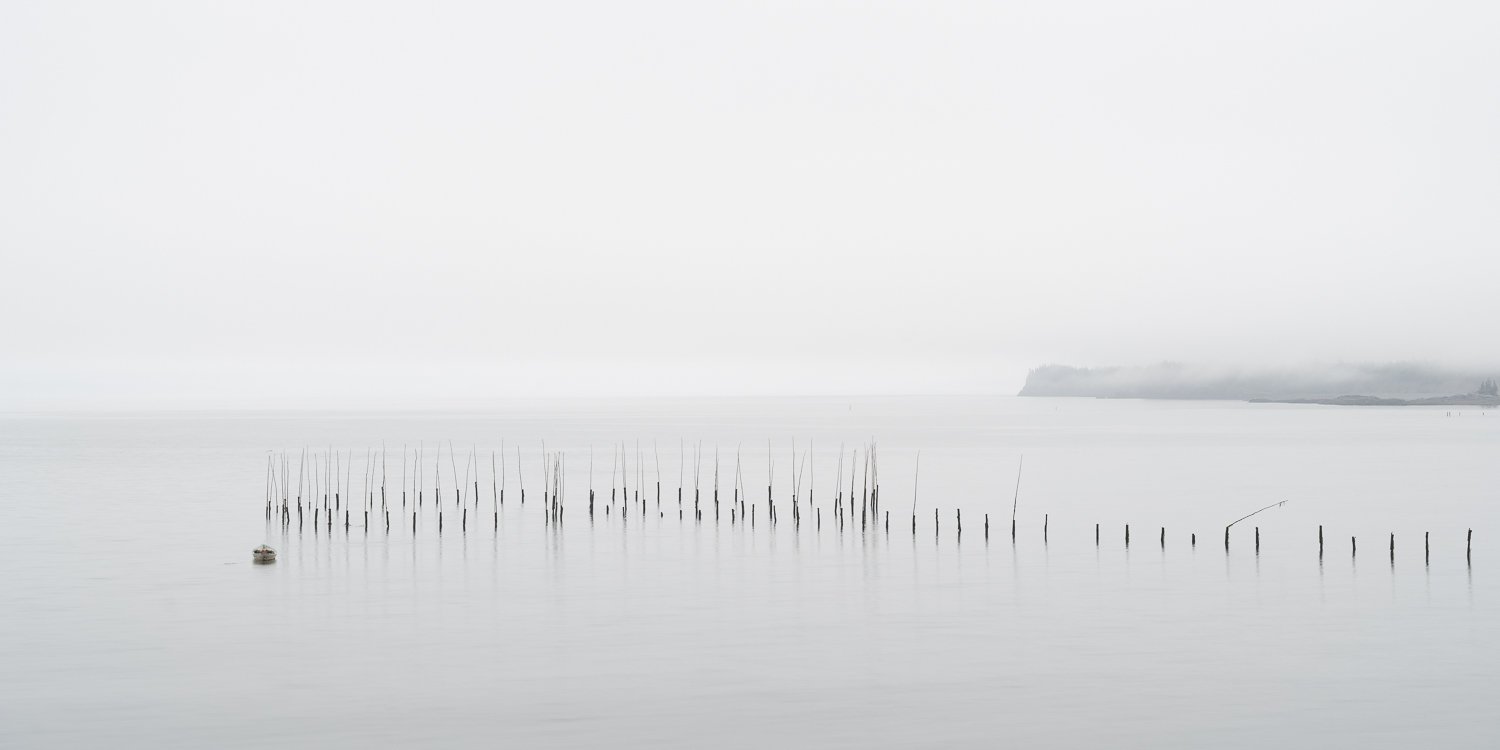In July/August 2023 I travelled to the Bay of Fundy in New Brunswick to photograph herring weirs. Weir fishing is a very old method of fishing - the stakes of an ancient fishing weir have been found near to the Bay of Fundy, in Maine, dating back over 5,000 years - and it has been practiced around the world in almost all seaside and riverine cultures going back millennia. Despite challenges, weir fishing continues to be practiced around the largest Bay of Fundy Islands (Grand Manan, Campobello and Deer Island), defying predictions over 40 years ago that it was about to die out. The herring may not come in the same numbers as they used to, but older weirs continue to be maintained and a few new weirs are being built in the hopes of big herring catches. The herring weirs are made from 40-70 foot long stakes pounded into the ocean floor, top poles (thinner, lighter birch or aspen poles around 12- 18 feet tall) and are hung with twine nets. When herring come in to the coastal areas in their huge shoals they are directed, by a fence attached to the shore, into the heart-shaped weir where they are trapped and harvested (when the weir is seined). Although all weirs follow the same basic design principle, each is unique, its shape dictated by the currents and counter-currents in the Bay of Fundy, the type of sea bottom (sand or rock) and whether or not it has an additional pen for holding herring. I thoroughly enjoyed the chance to photograph these functional yet strikingly beautiful structures and I hope that this is just the beginning of an ongoing series.
To read the story of the trip and to see some behind-the-scenes pics, take a look at my blog post about this wonderful trip.












